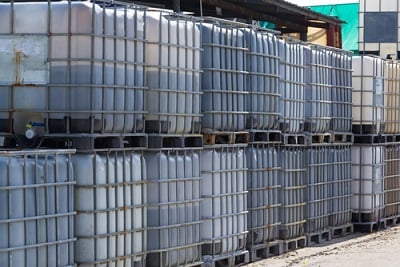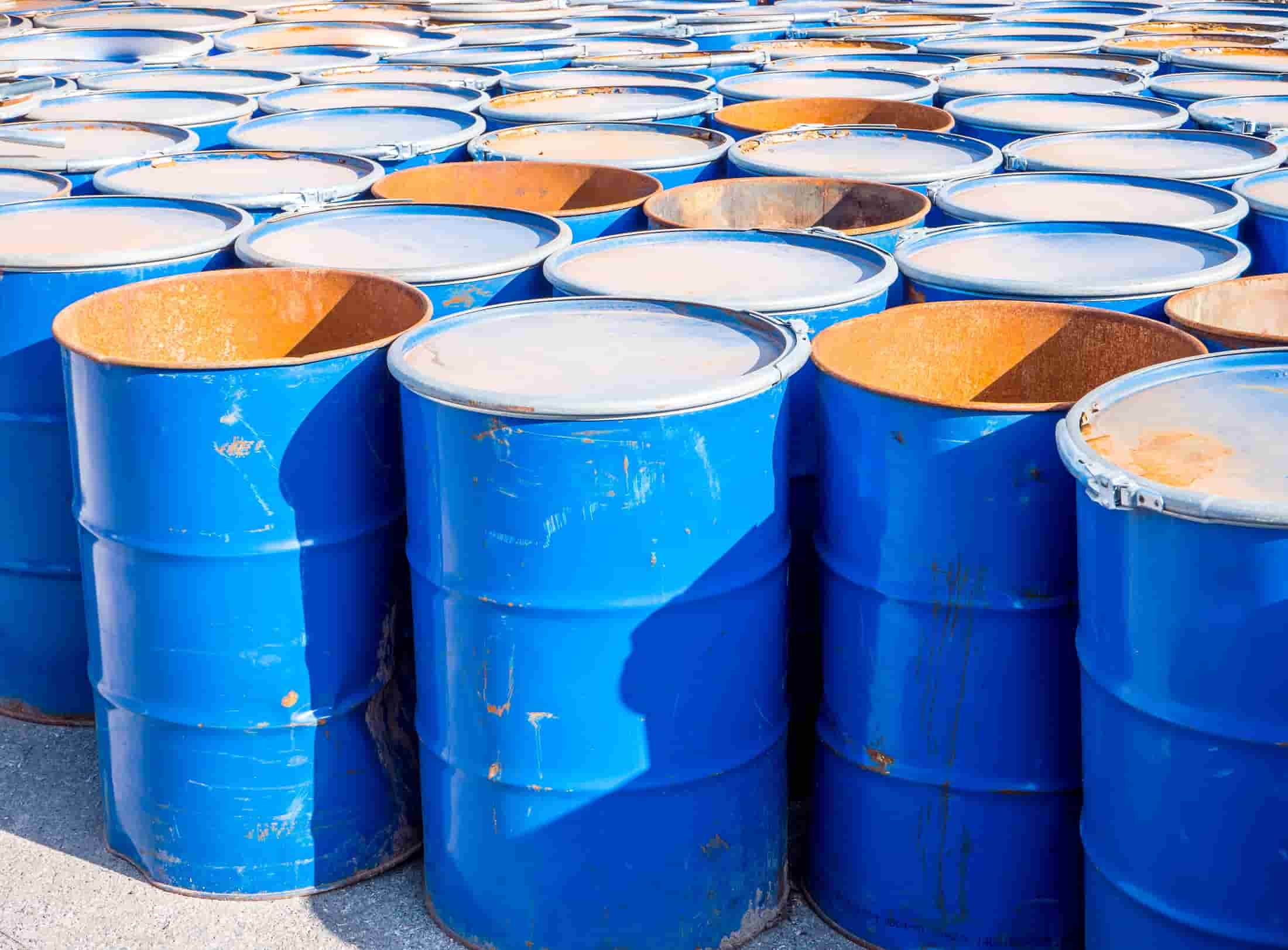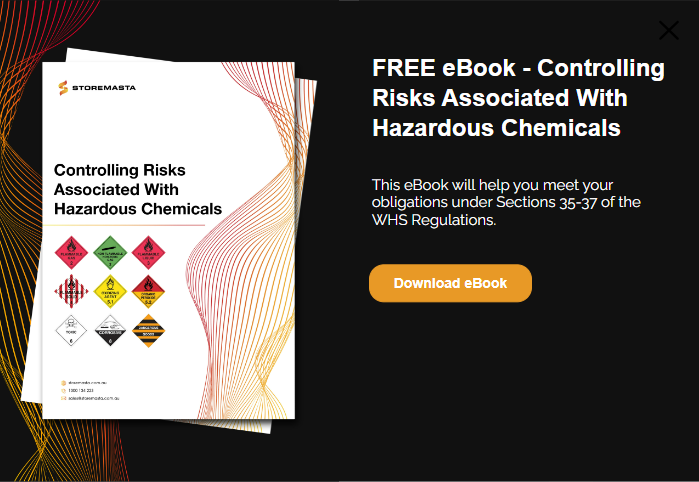When you’re buying a chemical storage container, you’re taking an essential step towards achieving compliance in your workplace. But what are the key factors that you need to consider before you make your purchase? Chemical storage containers (otherwise known as Dangerous Goods containers or outdoor Dangerous Goods Stores) are a specialised storage solution that you can’t just pick up at your local hardware store. Unlike regular storage or shipping containers, they’re designed to reduce the many risks posed by the hazardous chemicals that you’re storing. But with a range of available options, it can be difficult determining which container is best suited to your needs. To simplify your search — and eliminate any unnecessary or time-consuming guesswork — we’ve listed 6 key questions that you should consider before you buy a storage container for your Dangerous Goods.
1. What Is The Type Of Chemical That You’re Storing?
When determining your Dangerous Goods storage requirements, the first point you should consider is the type of chemical that you’re storing. Each hazardous chemical belongs to a particular Dangerous Goods class — and they all pose specific risks to people, property and/or the environment. Therefore, your chemical storage container must be designed and constructed to mitigate those risks.
The simplest way to find out if your container is compliant is by checking if it’s been manufactured to meet the requirements of the Australian Standards. Each class of Dangerous Goods has a particular Australian Standard which details the requirements for the safe handling and storage of the substance.
/How%20to%20select%20the%20right%20chemical%20storage%20solution-600x300.jpeg?width=444&name=How%20to%20select%20the%20right%20chemical%20storage%20solution-600x300.jpeg) The first thing you should do when looking at storage containers is to determine if it’s compliant with the Dangerous Goods that you’re planning to store.
The first thing you should do when looking at storage containers is to determine if it’s compliant with the Dangerous Goods that you’re planning to store.
Below are some commonly found classes of Dangerous Goods that you may have onsite. We’ve listed each class of goods with the relevant Australian Standard that explains the storage requirements.
- Class 3 Flammable Liquids - AS 1940:2017
- Class 5.1 Oxidizing Agents - AS 4326:2008
- Class 5.2 Organic Peroxides - AS 2714:2008
- Class 6.1 Toxic Substances - AS NZS 4452:1997
- Class 8 Corrosive Substances - AS 3780:2008
For example, flammable liquids pose a wide range of risks and must be stored in a container that features a range of control measures including:
- Constructed with non-combustible materials – to reduce fire and explosion hazards
- Liquid-tight spill containment sump – containing chemical spills and leaks
- Natural ventilation – assisting with the natural dispersion of hazardous vapours
Therefore, when selecting a chemical storage container for your Dangerous Goods, you should start by referring to the Safety Data Sheet of your chemical to learn the DG class. Then, make sure you check with the manufacturer or supplier that the container you’re considering is constructed in full conformance with the applicable Australian Standard.
2. What Type Of Chemical Packages Do You Have?
Chemical storage containers come in a wide range of sizes to suit a variety of packages. When choosing a container, it’s a good idea to consider the type of chemical packages that you’ll be storing.
Whether you’re carrying smaller packages, 4 litre drums, 205 litre drums or IBCs, you’ll need to find a container that can comfortably fit size and quantity of the packages that you’re storing.
 There are various types of chemical storage containers for the storage of packages, drums and IBCs.
There are various types of chemical storage containers for the storage of packages, drums and IBCs.
There are specific dangerous goods stores made for certain types of chemical containers. For example, you can select a drum storage container or an IBC container to store larger quantities of chemicals. If your packages are small drums or containers, then you’ll require a store that’s equipped with pallet racking to suit the height of your packages.
3. What Quantity Of Chemicals Do You Have?
Naturally, when you’re assessing your storage needs, you’ll have to find a container that meets your capacity requirements. Containers will be clearly marked with their maximum capacity load — which must not be exceeded due to the risks that overloading poses, such as increased chance of chemical spills, hazardous vapours and human harm. Make sure that you’re purchasing a container that is appropriate for the volume of chemicals that you’re storing, as well as the type of package that they’re housed in.
You should also consider how the size/weight of the packages, drums or IBCs will affect your staff’s ability to handle the chemicals safely. For example, if you have large or heavy packages, you should locate the chemical storage container close to the area where staff are handling the chemical. This will reduce the risk of chemical spills and bodily injury.
Give some thought also to the foundation that you’re placing your chemical storage container on. While smaller packages can be kept in a small store that’s placed on a bed of gravel, larger stores should be installed on a concrete base that can carry the weight of the full DG container.

A key consideration when choosing a DG container is the quantity of chemicals that you’ll need to store.
4. How Will You Be Using The Chemicals?
Each chemical store is used for a specific purpose, whether it’s a storage facility for unopened packages or a container to keep chemicals that are pumped or decanted on a regular basis. Therefore, in addition to determining the type and quantity of chemical packages, you should also consider how these packages will be used by staff.
If you are using the container as a storage facility for unopened goods, then check that there’s adequate shelving installed in the store. When staff are required to pump chemicals from a container, you need to check that the container is big enough to fit the pump. If your chemicals require regular decanting, make sure that the container is configured in such a way as to allow for the safe decanting of chemicals. Shelving and racking within the storage container may need to be customised to suit your daily operations.
5. What Are The Weather Conditions At Your Location?
As an outdoor chemical storage option, you need to consider the elements when choosing a container for your business. If you’re placing your container in a location near the ocean, you may have to request extra corrosion protection to protect the construction of your container. When choosing a container for a wet location, you may wish to opt for double louvred panels to prevent heavy rainfall from entering the container. You may also have to opt for additional shelter to be constructed at your site, such as a canopy or ramada. If your workplace is in an extremely hot location, keeping the chemicals at a safe temperature may be a key consideration. To assist with heat deflection, you could consider painting the container white instead of its original colour. Placing the chemical storage container in a sheltered position can also assist with regulating temperatures within the store.

The weather conditions at your site may require additional features to be included in your storage container, such as extra corrosion protection or double louvred panels.
6. What Is The State Of Your Operations?
The final point in our blog is all about ensuring that you’re getting the best value-for-money when you’re buying a DG container. As a long-term investment, you want to make sure that you’re purchasing a product that will meet your needs today, tomorrow and into the near future.
If you’re deciding between, for example, a 4-pallet and a 6-pallet IBC container, you may opt for the smaller model. However, if your business is in a state of growth, then you may have to go out and buy another 2-pallet unit sooner than expected. The problem with this is that chemical storage containers are more cost-effective the greater they are in capacity. So, choosing a unit that’s too small for your burgeoning operations is not a good investment long-term.
Consider how your business will continue to operate into the future and purchase a container that will grow with your enterprise.
You may also wish to consider how long you may stay at your current premises. Is it worth installing a concrete slab for a new container if you’re only going to shift locations within the next few months or years? Perhaps in those circumstances, it’s a better idea to purchase a portable Dangerous Goods container that can be easily placed on a range of surfaces, such as gravel. When it comes to outdoor chemical storage, there are a range of permanent and relocatable storage containers on the market, so consider where your business is heading before you make your final decision.
Choosing A Chemical Container?
From ensuring your container complies with Australian Standards to it being a suitable long-term investment for your business, we hope we’ve helped you understand what factors you should consider when selecting a chemical storage container. If you’re interested in learning more about reducing chemical risk at your workplace, we have an eBook that can help. Controlling Risks Associated With Hazardous Chemicals will introduce you to our 4-step risk management methodology that you can easily apply to your business. It also offers helpful tips about reducing the risks associated with Dangerous Goods by choosing and maintaining the correct chemical controls. Why not get your free copy of our guide today by simply clicking on the image below?
Joining the team as a Dangerous Goods Storage Consultant, Melissa Hampton became Storemasta's Marketing Manager in late 2021. With extensive knowledge and experience in chemical compliance, Melissa is responsible for leading the Marketing team and helping shape their marketing strategy. In her spare time, you can find Melissa hiking, swimming and enjoying the great outdoors in beautiful north-west Tasmania.
